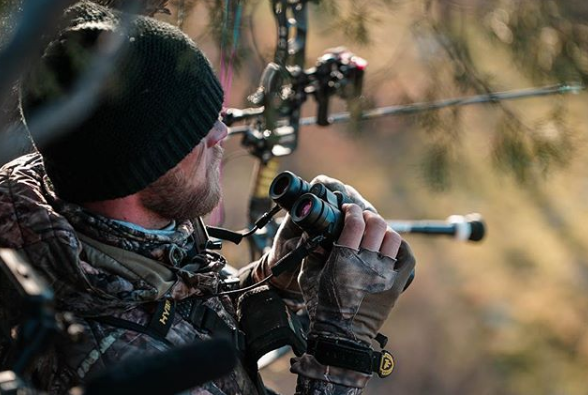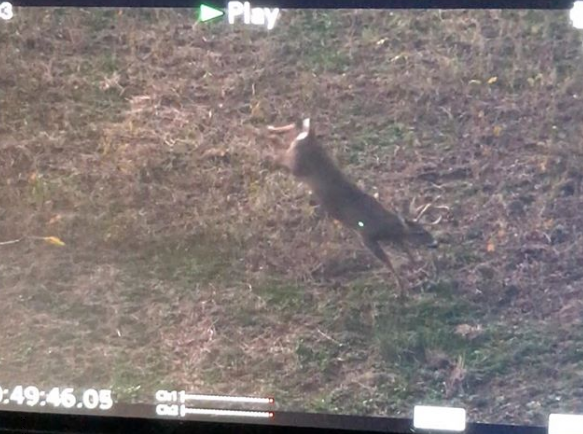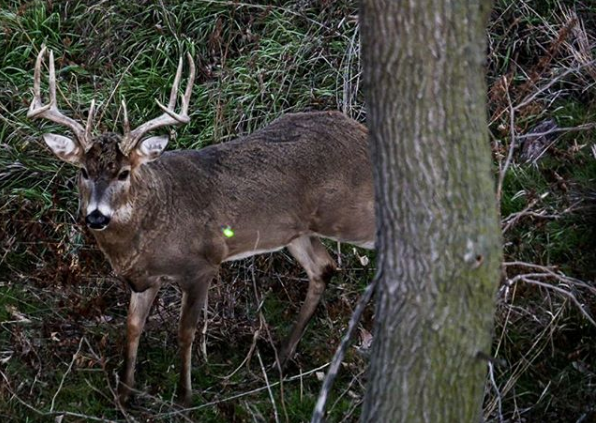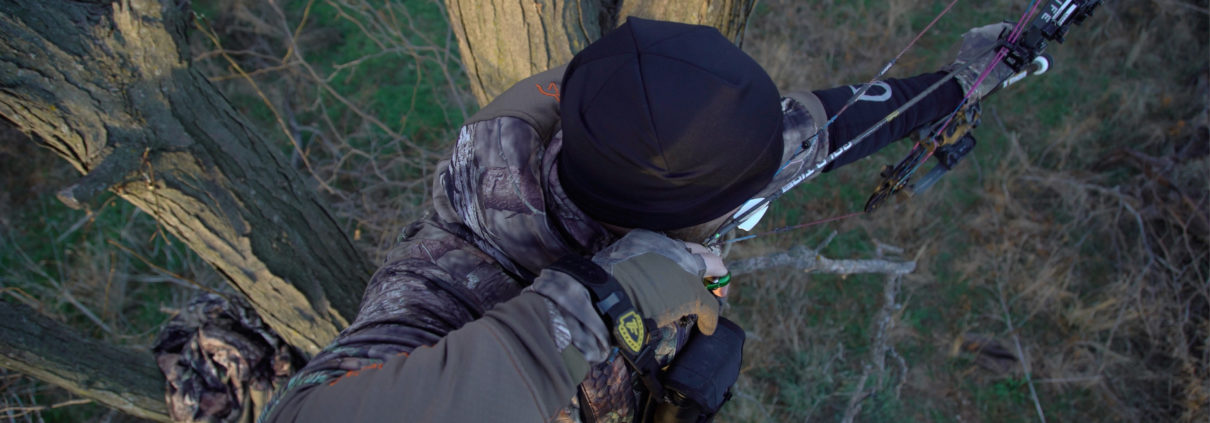The Ethical Bow Hunting Shot
Bow Hunting Tips | Ethical Bow Hunting Shots
Hunting is not a right, but a privilege and one that hunters must protect by hunting and shooting responsibly. The harvesting of game means the taking of a life and that must be done swiftly and as humanely as possible. The shot must be accurate, properly placed and ethically taken.
A bow has no shocking power when it comes to large game. Death comes by hemorrhage inflicted by a sharp broadhead. Fortunately there are numerous excellent broadheads on the market today from which to choose. Buy the best broadhead you can afford and ALWAYS hunt with a new sharp head or one that you have sharpened to a razor’s edge. A dull broadhead will definitely kill but will greatly minimize the blood trail and increase the chances of the animal suffering a lingering death often going unrecovered by the hunter. This and the angle or distance of the shot is obvious to any hunter but often forgotten in the heat of the moment. So what is the best way to ensure you take an ethical bow hunting shot?

Preparation
ALWAYS sight-in your bow or crossbow using the broadheads with which you intend to hunt. Broadheads often fly differently than field tips even if the weights are identical. Weight is not the only consideration as it is the aerodynamics of the head that has the greatest impact on an arrows flight.
When hunting with bow or crossbow shot placement is the key to success. That means ensuring equipment is properly matched and tuned to produce the best flying and most accurate arrows possible. It is the hunter’s responsibility to ensure they can deliver the shot where it will inflict a quick and humane death.
Not being competent with the weapon with which they are hunting with is by far the most common mistake made by hunters. Standing at a known distance on level ground on a warm summer day and being able to put four out of six arrows in the bull’s-eye is not being ready to hunt. Hunting shots happen in all weather conditions and in all terrain. If you intend to hunt from a tree stand practice from a tree stand. If you intend to hunt from a ground blind practice sitting on a stool or chair or kneeling. Practice random shots from various distances and if you sighted your crossbow in from a bench rest, practice shooting it offhand. Watch where your first shot of any practice session hits. There are no warm-up shots when you are hunting. Strive to make your first shot count under any conditions. No warm up shots, no getting adjusted. Practice random shots until your first shot hits the mark consistently.
Bow hunting is not horse shoes, close does not count. When practicing do not shoot at the whole target but learn to pick a spot and aim deliberately. When hunting do the same thing. After you have an animal in range concentrate on the spot you want to hit. Don’t be distracted by anything including the size of the rack if it is a buck. Focus entirely on the spot on the animal you want to hit. Try to pick out a tuff of hair or a slight change in color or a shadow behind the front leg, anything to focus your attention on. Remember if you aim small you will miss small.
Always practice from a longer range then you intend to hunt. Long range practice helps define your form and makes shorter shots easier to make. It is a good rule of thumb to practice at twice the distance you intend to shoot when hunting. As the average bow hunting shot for whitetail is approximately 20 yards practice to hit a 6 inch circle at 40 yards. You may not be able to hit the six inch spot every time from 40 yards but you will not believe how easy a shot that presents itself at 20 yards or less when hunting will seem. As a general rule of thumb both vertical bow and crossbow shooters should not take any shot at any distance further than you can keep your arrows consistently inside a six inch circle.
While practice before season is important practice during the season is equally as important. Take a few minutes each day or every other day to shoot 6 to 12 arrows to keep you form consistent and your muscles loose keeping you in top form when a shot presents itself.
Killing Shots
When it comes to taking a shot at a game animal with a bow the object is not just to hit the animal but to place a killing shot within the heart lung area, the largest collection of major blood vessels in the animal’s body. Seek out reference material on-line or in the library showing the internal organ structure of the whitetail deer or other big game being sought to identify exactly where to place your arrow. Note heavy bone structure which should be avoided as it can deflect an arrow and greatly reduce penetration if struck.
Once you have an animal within your shooting range the next major consideration is the angle of the shot. The ideal shot with a bow is at a deer slightly quartering away from the shooter. This angle allows the arrow to enter the soft rib/belly section and angle forward into the heart lung area. While broadside shots are certainly desirable, watch the position of the deer’s front leg on the side toward you. Proper arrow placement is just behind the front leg. If the deer is slowly walking or feeding their front leg at times will be pointing rearward covering the ideal shot location with the shoulder blade and leg bone. Wait for the leg to be in a forward position before triggering the shot. Shots with a deer facing directly at you or directly away should be avoided. Both shots although, they can be deadly, often result in poor penetration without an exit wound, a poor blood trail and often a lost dead deer. While the neck shot is a favorite of some rifle hunters it is not well suited for a bow and should be avoided. While a hit in the spine will put the deer down that is a very small target to deliberately shoot for. A deer struck in the neck with an arrow is often lost.

Shot Timing
The art of bow hunting is about getting close, being properly concealed and remaining patient enough to get not only a shot, but the best shot. A deer moving through a given area or feeding is normally alert but relaxed. Deer are always checking their areas for sign of danger and are ready to flee in a split second. However if they are not aware of your presence they will normally offer you a killing shot if you are patient. When hunting deer with a bow things change every second. It is important to gain the experience to know when to shoot and when to wait. The only way to learn that is to spend as much time in the field as possible, be ready to take the shot and skilled enough and focused enough to place the arrow in the right spot. To shoot any sooner is to risk making a poor hit and losing and wasting a valuable animal. It is important as a bow hunter to have the discipline to pass up a poor shot and wait for a better opportunity. To do any less is not only irresponsible, it is unethical and it is threat to the sport of bow hunting.
Anyone can have a bad hit. Unfortunately it happens to the best and most experienced bow hunters. However it is the responsibility of each of us as bow hunters to avoid bad shots at all cost, to teach young bow hunters to be disciplined and ethical and to learn tracking skills and made every attempt to recover hit game. There is now excuse for anything less.
Situational Dependent Shot Placement and Tips
The next 9 shots are some every bow hunter will encounter at some point, it’s up to you on whether or not to shoot or where you will place the arrow.
#1 Straight on Chest Shot
The buck is walking towards you and will wind you before turning. While this shot looks like a bow hunters dream it can quickly turn into a nightmare. The chest area is covered with heavy muscle and bone which could limit penetration and the chances of an exit hole is greatly diminished. A better shot will present itself as the deer passes by or turns slightly.
Advice: Wait it out. It’s not worth risking the shot and you might be offered a better shot at any moment or on a different hunt.
#2 Neck Shots
Let’s say the deer’s vitals are covered up by a tree, and the only thing showing is the neck. Do you shoot? Neck shots such as this can be very tempting but unless the spine is penetrated the deer will surly run off only to go down some distance away and may not succumb to the wound for several days. The blood trail will be minimum and chances of recovery slim.
Advice: Wait it out. This deer will either step into view shortly presenting a shot or turn and walk away for another day and another opportunity.
#3 Feeding, Shoulder Back Shot
The target is feeding in a food plot or drinking from a waterhole, with the shoulder back covering a good portion of the vitals. While this deer offers what seems like an excellent opportunity note the position of the front leg. Feeding deer, or any other game often position one of the front legs to the rear position, meaning heavy leg bones and the shoulder blade are covering part of the heart lung area.
Advice: Wait for the deer to put the left leg forward and you will have an unobstructed shot into the heart lung area for an almost certain kill.
#4 Deer at a Scrape
A common situation you may encounter, especially during October and November, may be a buck standing at or making a scrape. If the deer is perpendicular to you it can offer a great shot. Situations such as this mean that these bucks are preoccupied making a scrape offer an open lane to their vitals.
Advice: Let it fly!
#5 Walking/Running Away Shot
The game is up, the deer or other game animal is facing away and walking/running out of your bow range. This is a no shoot situation. Trying to get an arrow through the back end of the animal is very difficult if not impossible.
Advice: Wait it out. Deer, elk, pronghorn or any other game animal walking/running away unless you have spooked them completely can and often will turn quartering away to figure out what spooked them. At any moment you might be offered a quartering away shot on the edge of your effective bow hunting range.
#6 Quartering Away Shot
The target has turned slightly to look back at you, or has followed a run leading away from your location that offers a quartering angle. While the angle on this shot is desirable the target might be alert meaning it could bolt at the slightest sound or movement. If the target is not alert take time to study the angle and the position of the vitals. This slightly forward angled shot is ideal as it allows the arrow to enter the softer tissue and muscle behind the shoulder as the arrow angles forward into the heart lung area. The arrow should exit in front of the far front leg creating an exit wound providing a good blood trail.
Advice: The best decision would be to not shoot on a quartering away and alert target. If the target is not alert and offers an angle that allows an arrow to be placed in the vital area, let it fly.

#7 The Perfect Broadside Shot
If the target is perfectly broadside top your position you have essentially the perfect shot. If the target is focused away from the hunter and not on alert you are in the clear. However if the target is on alert by the posture you may want to wait or place the arrow lower than usual allowing for a vital hit whether they jump the string or stand still.
Advice: Shoot.

#8 Quartering To Shot
The target is quartering to you, and will hit your wind if it continues on the current route. The angle on this target makes it difficult to get a shot into the heart lung area with busting through heavy leg bones, shoulder blades, and heave muscle. However, if the target is moving past the hunter and not downwind you could be offered a broadside shot.
Advice: since the target vision is in your direction or could catch your draw, draw slowly and wait for the broadside shot that will shortly present itself. If you don’t get this and the target will pass downwind you should wait it out. Your wind might cause panic, allowing the target to present a broadside or quartering away shot.
#9 Straight Down Shot
For tree stand bow hunters, a straight down shot on a deer is a hard shot. Besides challenging the use of you bow sight, the vitals are selective. You either hit one lung, or one lung and the heart. If the angle is slight it could be a great shot, but straight down often results in sounded deer.
Advice: Wait it out. This target will offer a great opportunity for the majority of situations since any route it takes creates a better angle for a shot out of a tree stand.
Take your time, know your limits, and study shot placement and situations. Being prepared before you hunt and are presented shot opportunities is your best chance at always being a responsible and ethical bow hunter.




